This article was originally published on my personal website in 2014.
The Saamis Teepee
Background
If you’ve ever driven through Medicine Hat on the Trans-Canada Highway, you might recall seeing an enormous steel structure akin to the skeleton of an Indian teepee towering over the asphalt. This internationally-recognized monument, arguably Medicine Hat’s most prominent landmark, is known as the Saamis Teepee. Standing at 65.5 metres, the Saamis Teepee holds the record for being the tallest teepee in the world.
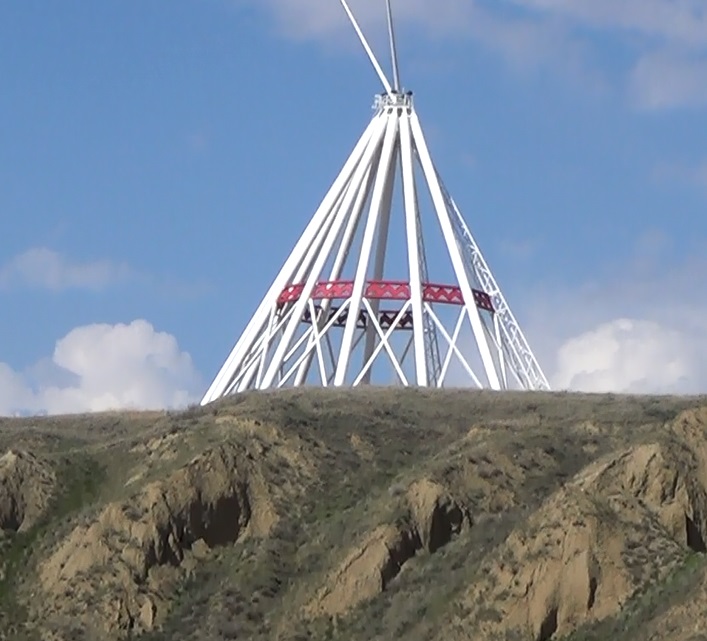
The Saamis Teepee was originally built for the 1988 Winter Olympics in Calgary. Designer Steve Illes had the teepee painted “white for purity, red for the rising and setting sun, and blue for flowing waters”. It stood in Calgary’s McMahon Stadium, where it housed the Olympic Flame during the opening and closing ceremonies.
Sometime after the Games, the late Amerigo “Rick” Nella Filanti, a prominent Medicine Hat entrepreneur and philanthropist, privately purchased the teepee from the City of Calgary. Filanti hoped to donate the tallest teepee in the world to the City of Medicine Hat in order to give the prairie city some commercial allure. According to local legend, Filanti, after purchasing the teepee, lacked the funds to transport the teepee from Calgary to its prospective destination and entreated the support of the City of Medicine Hat. The City, eager to assist the businessman with his endeavour, agreed to pay for the transportation on the condition that Filanti eventually pay back the debt. As collateral, Filanti, who was something of an art collector, gave the City a Picasso drawing. Somehow, while in the City’s hands, the valuable art piece was considerably water damaged.
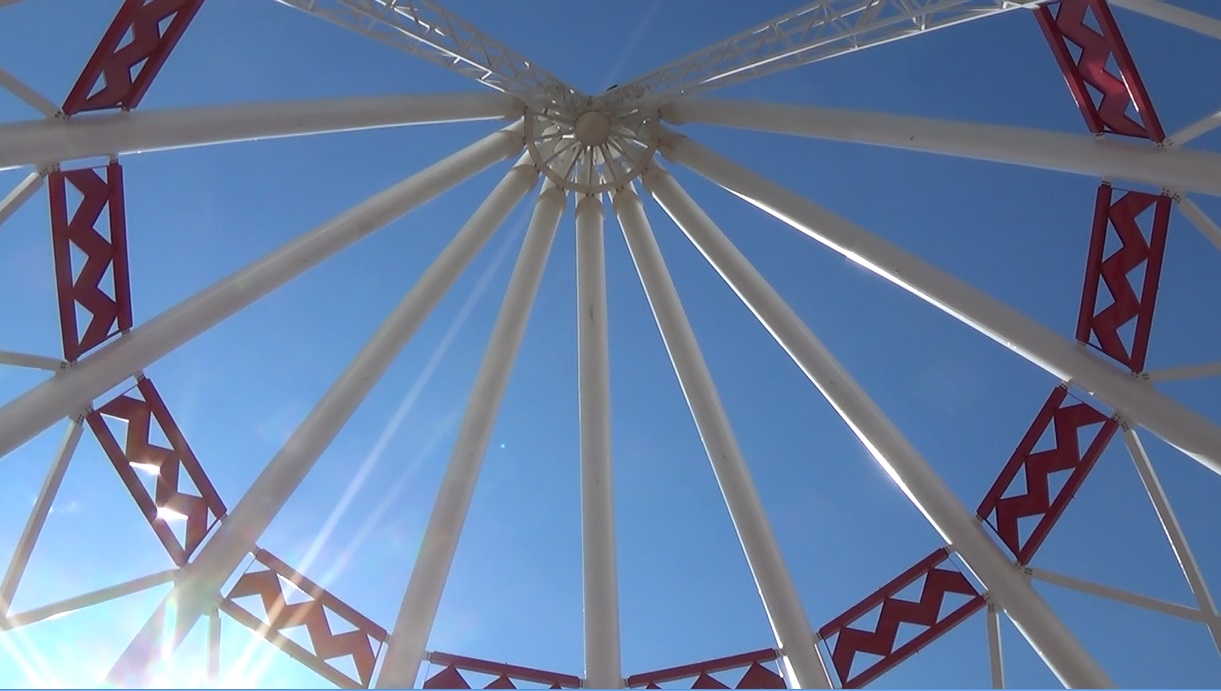
In 1991, Filanti’s undertaking came to fruition. The Saamis Teepee was re-erected in Medicine Hat, on the edge of an old Blackfoot buffalo jump overlooking the Saamis Archaeological Site (near the Trans-Canada Highway). The teepee was unveiled to the accompaniment of traditional Blackfoot drumming and dancing, as well as a telling of the “traditional Blood version” of how Medicine Hat got its name by Blood storyteller Dan Weasel Moccasin. In 2003, Medicine Hat artist Jim Marshall built a brick mural depicting Weasel Moccasin’s story, which now stands at the teepee’s base. The Saamis Teepee has since become an icon for Medicine Hat and now serves as one of the city’s major tourist attractions.
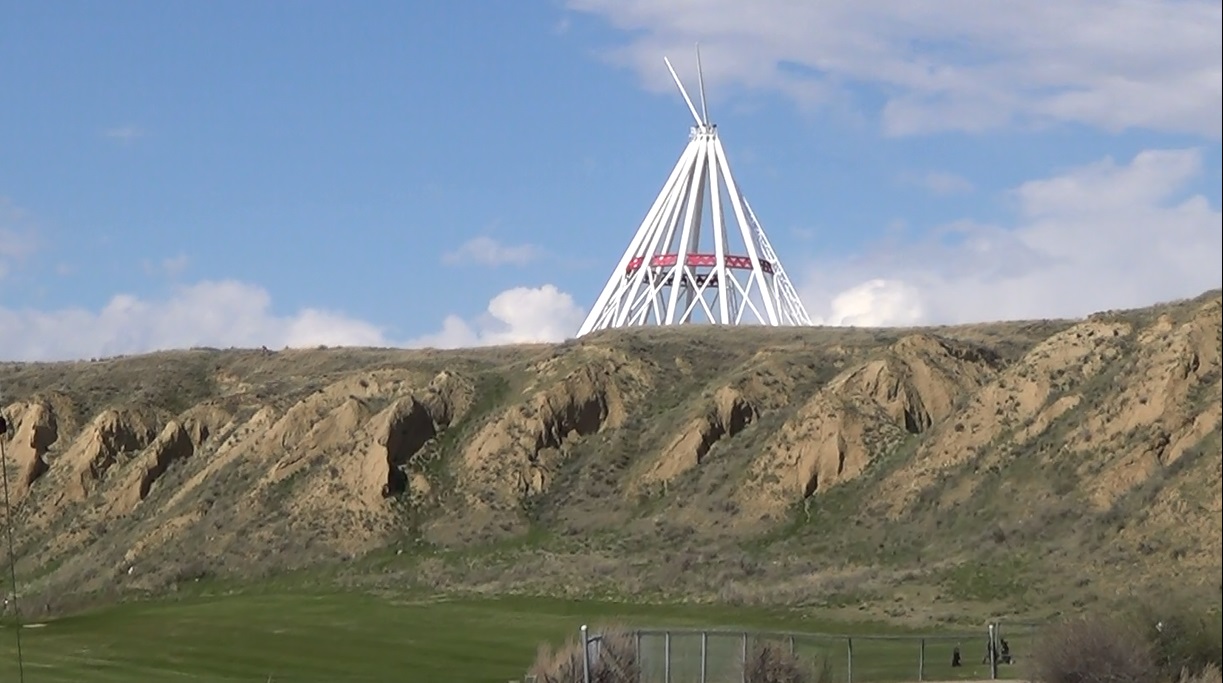
The Paintings
Inside the teepee, there are 10 circular paintings, vaguely reminiscent of decorated Indian shields or drums, depicting the history and culture of Canada’s native Plains peoples. These paintings, mirrored by their respective descriptions on the ground, hang equidistantly on the teepee’s inner wall. All of these paintings and their individual descriptions are shown below.
How Medicine Hat Got Its Name (Blood Version)
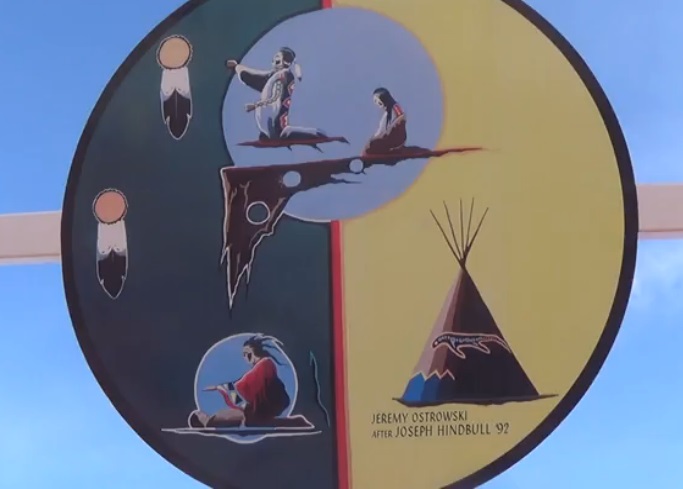
Over the years, there have been many explanations offered for the name of Medicine Hat. The stories vary, but all reflect a long association with the Aboriginal peoples of the Plains. This painting, by Jeremy Ostrowski after Joseph Hind Bull, is based on a story told by Dan Weasel Moccasin of the Blood People of the Blackfoot Confederacy.
Long ago a man named Eagle Birth fell in love with another man’s wife. Together they travelled to this area, but hunting was poor. One day Eagle Birth’s companion saw a headdress among the cliffs. She showed it to Eagle Birth, but when they looked at it closely it was just a huge piece of sagebrush shaped like a headdress. That night a merman spoke to Eagle Birth in his dreams and asked for a human to eat. In return Eagle Birth would be given special hunting powers.
Eagle Birth did not want to kill his companion, so they tried to fool the merman with the body of a dog. The offended merman threw the dog back. That night the merman returned, so the next day Eagle Birth went off to find a solution. As he sat thinking, a stranger wearing a lynx hat appeared. Eagle Birth killed the stranger and dove into the river with the body. At the bottom he found a large tepee, and the merman told him to enter. The merman was very happy with Eagle Birth’s gift and gave Eagle Birth both the tepee and power over birds and animals. Eagle Birth then heard another voice: the otter. He gave the otter the stranger’s hat. In return, Eagle Birth was allowed to draw an otter on his new tepee.
With his new powers, Eagle Birth captured many eagles, and his companion tanned many hides. When they returned to the tribe, they gave eagle feathers and hides to her former husband. These rich gifts were gladly accepted. Eagle Birth then built a tepee with the sign of the otter and the waves of the river on it and made a headdress of eagle feathers like the one he and his wife had seen. After he told his story, this area became known as Eagle Tail Feather Headdress or Medicine Hat.
The Blackfoot Confederacy

The Blackfoot Confederacy was an enduring alliance of distinct tribes or nations. The main alliance consisted of the Peigan or Pikani, the Blood or Kanai, and the Blackfoot or Siksika. The Gros Ventre or Atsina and the Sarcee or Tsuu T’ina were also linked to the Blackfoot Confederacy. The Blackfoot, Peigan and Blood peoples shared a common ancestry and spoke the same Algonkian language. The Gros Ventre spoke a completely different Algonkian language, and the Tsuu T’ina were Athapaskan speaking.
The way of life of all these peoples was based on buffalo hunting, particularly after they acquired horses about the beginning of the 18th century. Until the buffalo began to disappear in the late 19th century, the Confederacy was fiercely independent and dominated the Plains regions of southern Saskatchewan and Alberta, and northern Montana. This painting by Henry Standingalone depicts several elements of traditional Blackfoot culture. The buffalo was sacred, but it also supplied food and the raw material for a host of other necessary goods. The Medicine Lodge was used for sacred ceremonies. Sweat Lodges were used both for healing and to purify people. The tepee was the traditional dwelling of the Plains peoples.
The Plains Cree Way of Life
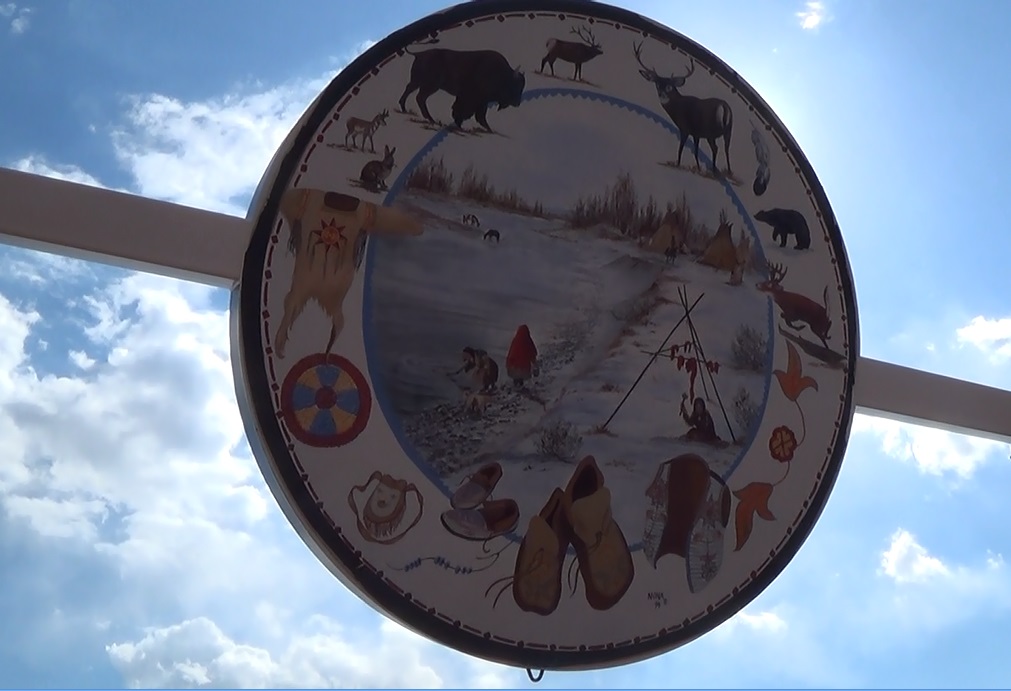
The Cree are usually grouped into three major divisions based on dialect and way of life. The Swampy Cree still live around Hudson Bay and James Bay while the Woods Cree lived further inland in northern Manitoba. Saskatchewan, Alberta, British Columbia and in the Northwest Territories. The Plains Cree live in the Plains and Parklands regions of the Prairies.
Historically, the Plains Cree were buffalo hunters, using buffalo pounds and jumps in addition to other hunting methods. In the spring and early summer the Plains Cree followed the buffalo out onto the open plains. The buffalo usually moved back into the aspen parklands in late autumn for food and shelter, and the Plains Cree followed. This painting by Nona Foster indicates they also hunted deer, elk and smaller game, including fur-bearing animals for trade.
Plains Cree clothing was also decorated with fine quill work, and later, bead work. These beads were acquired through trade, and the Plains Cree became noted for their geometric and floral designs. This painting depicts some of those designs on moccasins, a vest and a tobacco bag.
Plains Cree Ceremonies
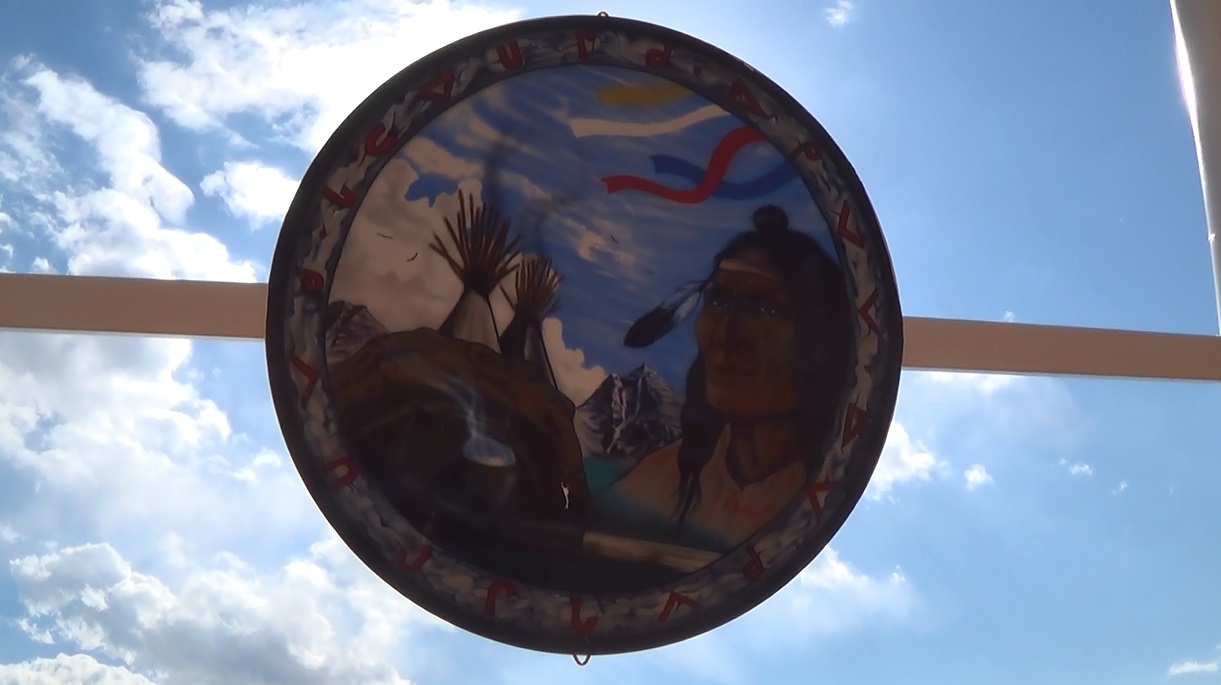
The basis of Plains Cree society was the hunting band. In the past, bands often co-operated in communal hunts and in tasks like constructing buffalo pounds and fishing weirs. Ceremonies and societies also brought Plains Cree together across band lines. For example, men who had displayed particular bravery might be invited to join the Worthy Young Men Society, while others belonged to a Warriors’ Society or Lodge. Members of these societies had important responsibilities, as well as enjoying the right to participate in special ceremonial songs and dances.
The ceremonial life of the Plains Cree remains rich and vibrant, and traditional ceremonies are still celebrated in many communities. Among the Plains Cree some of the most important of these are the Sun or Thirst Dance, the Masked Dance, the Give Away Dance, the Prairie Chicken Dance, the Pipestem Bundle Dance and the Tea Dance. Most of these ceremonies also involve feasting, offering of food, tobacco and prayers, and the exchange of gifts.
This painting by Robert Anderson depicts many of the most important elements of Plains Cree spiritual and ceremonial life including the Pipe, the Sweat Lodge and the Sun Dance.
The Plains Indians
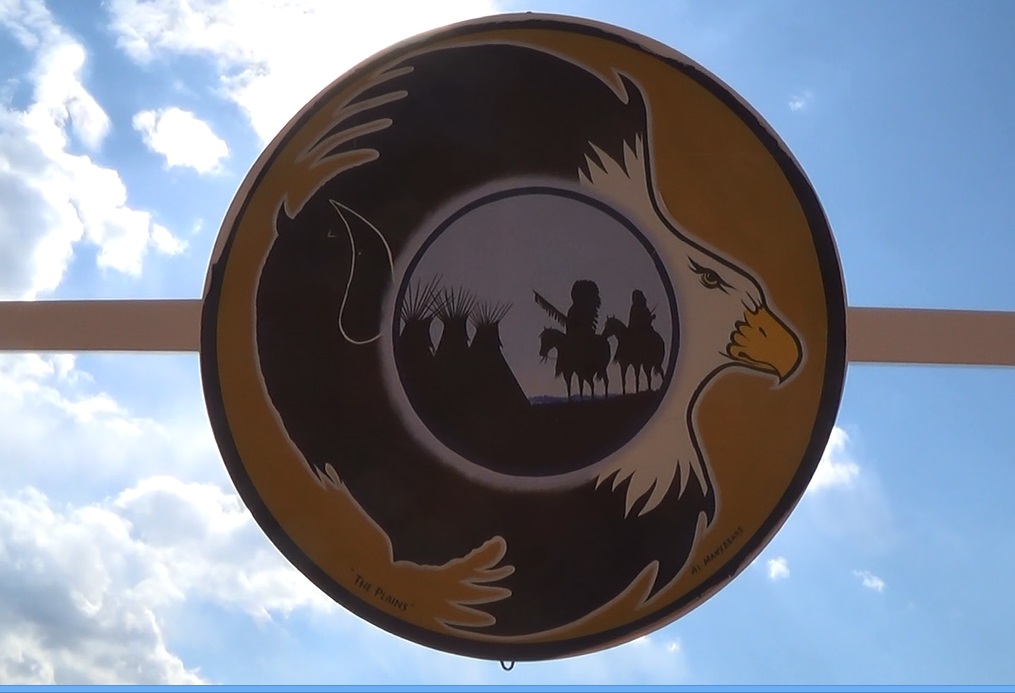
In Canada the term “Plains Indians” is used to describe a number of distinct peoples, including the members of the Blackfoot Confederacy, the Plains Cree, Plains Ojibwa, Assiniboin or Stoney, and small numbers of Dakota, Atsina and other groups.
Life for most Plains peoples was closely connected to the seasons. They travelled out onto the open plains in summer to hunt buffalo, and followed the herds back into the wooded parklands and river valleys in winter. In summer and early fall it was possible to organize large hunts using buffalo pounds and jumps. A number of pounds have been found in this area, including the Ramillies site, a stone and earth pound located northwest of Medicine Hat near Suffield. Most jumps were located in the more rugged terrain of southwestern Alberta. No site could be used every year, but for over 5,500 years hunters used Head-Smashed-In Buffalo Jump. A good hunt there might kill 100-200 buffalo at a time, and the meat was dried and made into pemmican which helped Plains peoples survive the winter.
This painting by Al Manybears indicates how important the buffalo was to survival on the Plains. The eagle was also a powerful symbol for Plains peoples. Eagle feathers were often used to decorate sacred pipes and other spiritual objects, and explorers’ accounts from the early 19th century suggest two eagle tail feathers were as valuable as a horse or gun.
Arrival of Europeans
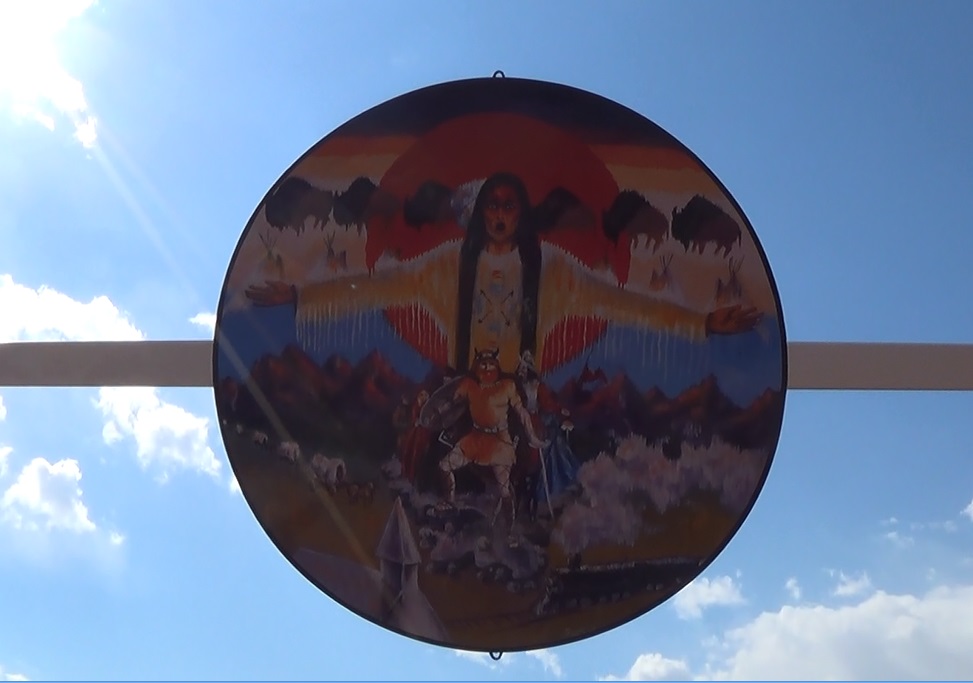
In about 1000 AD, Vikings from Greenland visited Helluland, Markland and Vinland, which are now believed to be Baffin Island, Labrador and Newfoundland respectively. They established a permanent settlement at L’Anse aux Meadows in Newfoundland and met people they called “Scraelings”. This was the first recorded contact between Europeans and the First Nations of North America.
The next recorded contacts between Europeans and First Nations did not occur until the late 15th and early 16th centuries when John Cabot and Jacques Cartier crossed the Atlantic. Thereafter the pace of exploration and settlement increased, and by the early 18th century the First Nations of the Plains had their first experiences of both imported trade goods and diseases. Historians and anthropologists still debate which had the most impact: smallpox, horses, or the gun.
The establishment of trading posts on the Plains and later the arrival of the missionaries brought further changes to the cultures of Native peoples. This painting by Marilyn Fraser-King depicts some of the major changes in diet, transportation, work and spirituality that occurred after contact between Native peoples and Europeans.
Treaty # 7
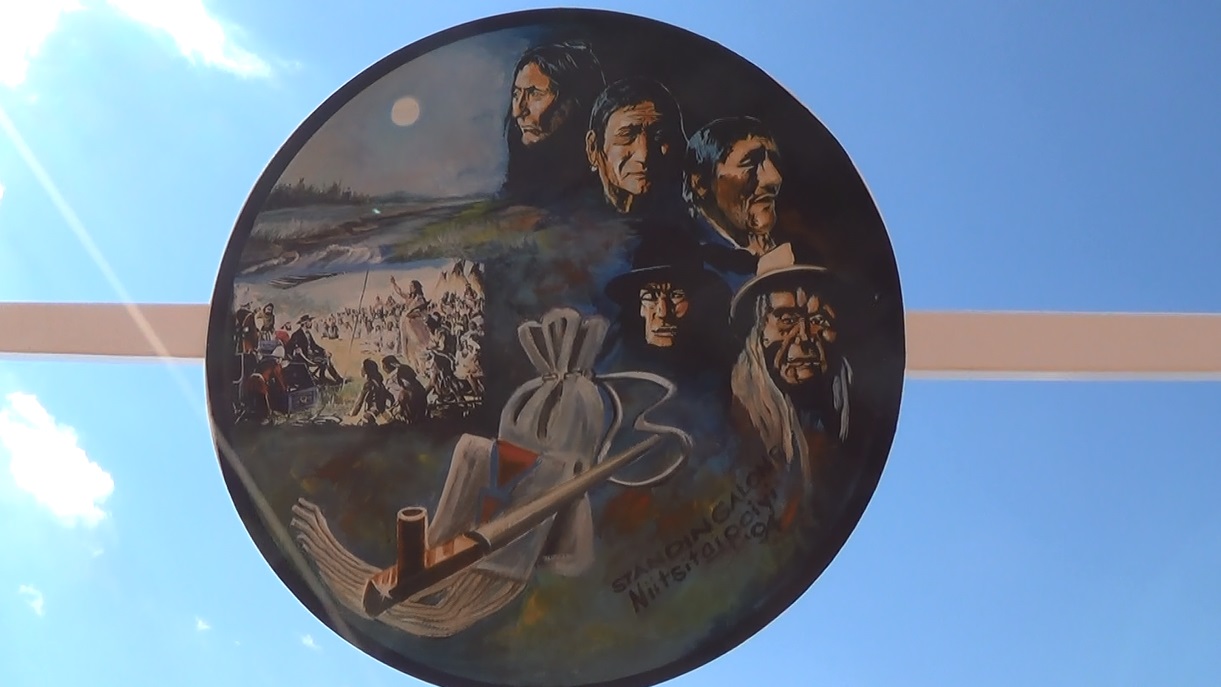
On 22 September, 1877, members of the Blackfoot Confederacy and a number of Stoney Indians signed Treaty # 7 at Blackfoot Crossing, near Gliechan, Alberta. The signing of this treaty was one of the most significant events in the history of southern Alberta. This painting by Henry Standingalone portrays the five chiefs who signed the treaty: Crowfoot of the Blackfoot or Siksika, Red Crow of the Blood, Bears Paw of the Stoney, Sitting on Eagle Tail Feathers of the Peigan, and Bullhead of the Tsuu T’ina.
The Government of Canada was anxious to have a treaty signed, but leaders of the Blackfoot Confederacy and other Plains peoples were initially reluctant to accept a treaty. The disappearance of the buffalo herds from the Canadian plains in the 1870s created great hardship, and resistance to a treaty declined. Some leaders, like Crowfoot, came to believe that a treaty promising immediate assistance and settlement on reserve lands was the best option left to their people. Not everyone agreed, however, and the terms of the treaty were vigorously debated.
The Government of Canada believed the treaty was a formal land surrender, opening southern Alberta for settlement. Leaders of the Blackfoot Confederacy saw the treaty more as an agreement to share land and resources. Although interpretations vary as to the exact meaning and intent of Treaty #7, the First Nations of southern Alberta consider it a sacred agreement between themselves and the Crown.
The Metis of the Plains
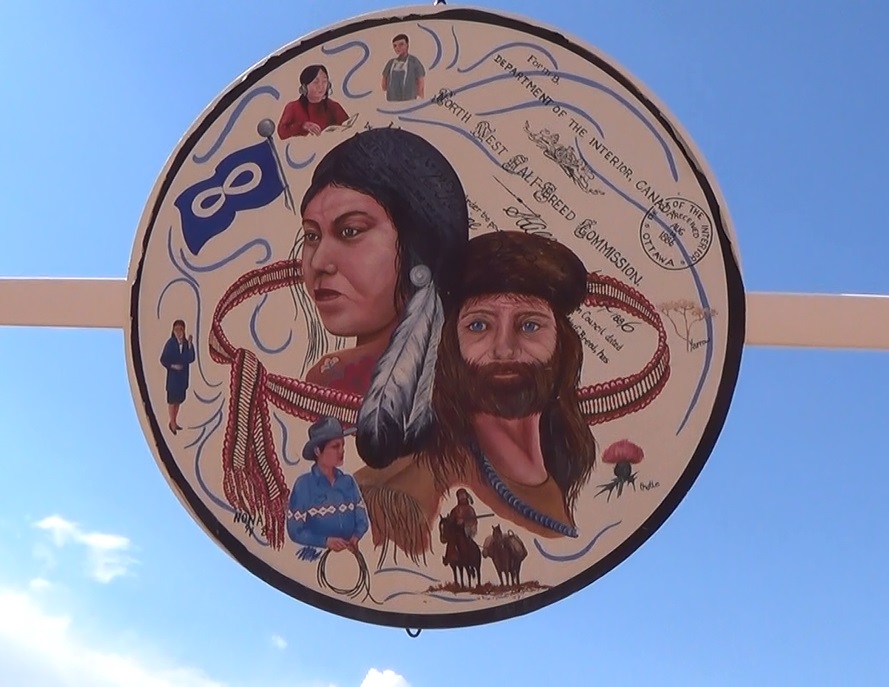
In the 18th and 19th centuries, a new and distinct people arose on the Plains: the Metis. The men hired to work for fur trade companies did not bring wives or families with them to the west until the 19th century, and then only on occasion. Instead, most married Aboriginal women “a la facon du pays” or in the custom of the country. Such marriages were of great practical benefit to the fur traders. Their wives knew how to trap and dress furs. These wives knew how to survive in what was a new land for their European husbands. These marriages were also good for trade. The women could act as interpreters, and produced goods like snowshoes, moccasins and clothing. Furs and provisions were also brought to traders, who now had family ties with trading bands. The women and their families also benefited through better access to valuable trade goods.
In time, the children of these initial fur trade marriages married fur traders themselves and worked for fur trade companies as guides, interpreters, canoemen, tradesmen and officers. Others specialized in supplying posts with provisions or worked as trappers. This painting by Nona Foster depicts important elements of the historic of this “New People”. It reflects their connection to Scottish, French, Cree and other cultures, their mastery of the buffalo hunt, and their role in the development of Western Canada. Metis herself, Nona Foster describes the main subject of this painting as “pride in our unique cultural heritage.”
First Peoples Today

This painting by Marilyn Fraser-King underlines both the continuity of Native cultures and the changes they have undergone in the modern world. The old world of buffalos and tepees maybe be gone, but as Marilyn Fraser-King writes, “we still pass on the feather, we still sing, we still hear the stories, we still listen to the wind, and we still feel the power of the Northern Lights.”
Together members of the Metis and First Nations represent an important, and growing, part of Alberta society. According to 1991 census figures, as many as 158,790 North American Indians, Metis and Inuit live in Alberta, over 6% of Alberta’s total population.
All aspects of life in Alberta, from the arts and education, to politics, business and sports, are enriched by people of Aboriginal background.
Circle of Unity
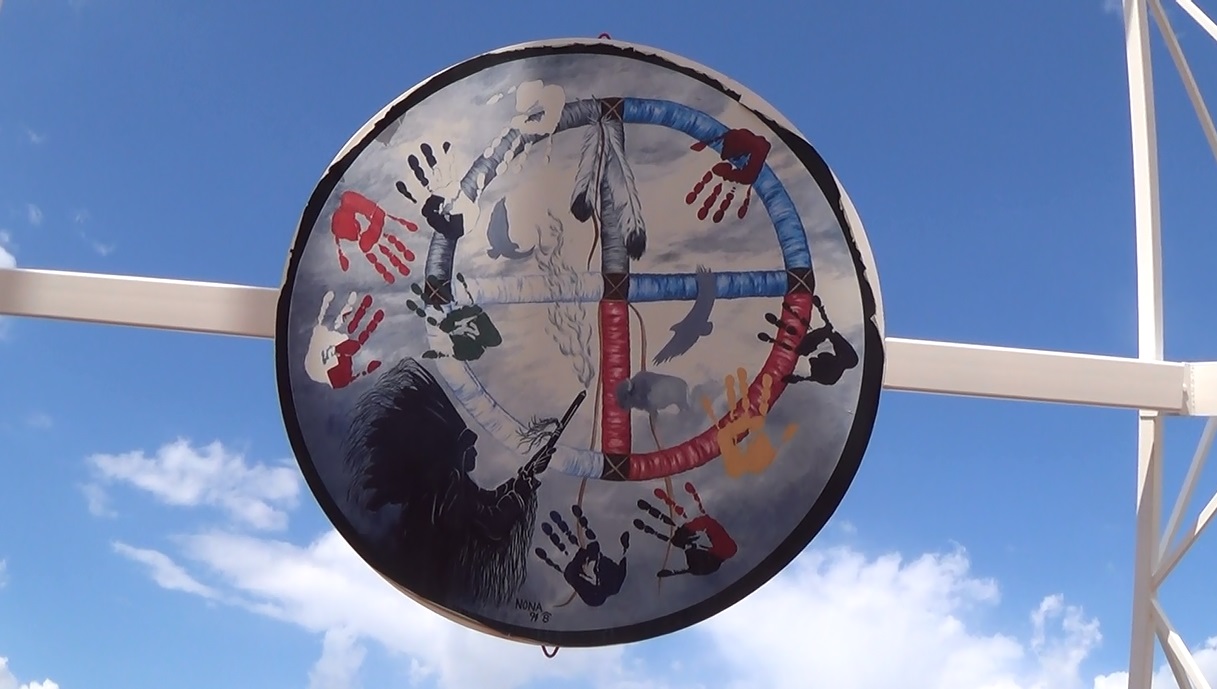
This painting by Nona Foster reflects her vision of this important issue. A warrior holding a pipe invokes the wisdom of the Great Spirit. The pipe represents the unity of all people and all things, for all things are all relatd. The crossed circle which dominates the painting is a very important symbol. The circle represents both unity and a belief that life has no beginning and no end. The crosspieces represent the four directions. The painting also depicts the buffalo as a symbol of the Great Spirit’s wisdom and generosity, as the buffalo provided food, clothing, medicine and shelter for the First Nations of the Plains. The eagle and eagle feathers represent honour, bravery, love, friendship and the relationship between man and the Great Spirit. Finally, the different colored hands represent the different cultures and peoples of the world. Some hands are a solid colour, but others are mixed like the many Plains peoples.
The symbolism of this panting is most appropriate for the Saamis Tepee project. Built on an archaeological site that has been designated a Provincial Heritage Resource, the Saamis Tepee is dedicated to the ideals of equality, tolerance and understanding, and to the rich cultural heritage of all North America’s Aboriginal peoples.
Jackie Smith
These paintings are Fabulous, and the highlight of my trip to Alberta. Is there any way you could have postcards, prints or books for tourists to take home to remember this art?
Vicks
Oh my goodness you have just saved my life I had a school project on this tepee and could not find any info anywhere. I love this website now you deserve all the happiness in the word whoever wrote this article thank you so very much. Thank you from the bottom of my heart I am so grateful, will forever be thinking about you.